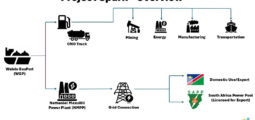The Restaurant Industry: A Recipe for Disaster or Resilience?
The High-Stakes Business of Running a Restaurant
The dream of opening a restaurant is one shared by many, but the reality is far less romantic. The industry is known for its high failure rate, with nearly 60% of new restaurants closing within three years and up to 80% within five.

Yet, despite these odds, successful restaurateurs do exist. What separates those who thrive from those who fail? Understanding the key pitfalls—and how to avoid them—is crucial for anyone looking to enter the restaurant business.
Common Reasons Why Restaurants Fail
1. Undercapitalisation
Starting a restaurant is expensive. Initial costs include property leases, equipment, staff wages, and marketing. Many entrepreneurs underestimate these costs and fail to secure enough funding to sustain operations beyond the launch phase.
2. Lack of a Business Plan
Passion alone is not enough. Without a solid business plan—including a market analysis, financial projections, and marketing strategy—restaurants can quickly run into trouble.
3. Poor Location
The right location can make or break a restaurant. High rent, low foot traffic, and misaligned demographics can doom a business before it even gets started.
4. Inefficient Operations
Poor inventory management, inconsistent food quality, and undertrained staff all contribute to customer dissatisfaction. Successful restaurants streamline operations to ensure efficiency and consistency.
5. Failure to Adapt
Consumer tastes and dining trends change constantly. Restaurants that fail to innovate or update their menus and business models risk losing relevance.
Strategies for Restaurant Success
1. Develop a Strong Business Plan
Successful restaurants start with a well-researched business plan. Entrepreneurs should consider customer demographics, competitive analysis, and financial strategies.
2. Secure the Right Funding
Insufficient capital is a major contributor to failure. Restaurateurs should explore multiple funding sources, such as investors, business loans, and grants.
3. Choose the Best Location
Accessibility, foot traffic, and lease terms are critical considerations. A prime location that matches the target market can be the foundation of a successful restaurant.
4. Implement Efficient Operations
Technology, such as restaurant POS systems, helps manage inventory and streamline order processing, ensuring better efficiency and cost management.
5. Build a Strong Brand
A restaurant’s brand identity should be clear and memorable. Everything from the menu to interior design should reflect a unified vision.
6. Keep Up with Trends
Restaurants that monitor industry trends and adapt their offerings—such as plant-based menus or sustainable sourcing—stay ahead of the competition.
Lessons from Restaurant Failures
Fashion Café
Despite celebrity endorsements, this concept failed due to poor management and a lack of focus on food quality.
Planet Hollywood
Relying on novelty rather than great dining experiences, the brand lost its appeal when the celebrity trend faded.
Success Stories: Restaurants That Beat the Odds
Shake Shack
From a hot dog cart to a global burger empire, Shake Shack’s focus on quality and simplicity has driven its expansion.
Sweetgreen
By tapping into health-conscious consumer trends, Sweetgreen has built a fast-casual empire with fresh ingredients and tech-driven service.
Chick-fil-A
Consistent quality, excellent customer service, and a clear brand identity have made Chick-fil-A one of the most successful fast-food chains in the U.S.
The Future of the Restaurant Industry
While the industry is challenging, resilience and adaptability can lead to long-term success. For aspiring restaurateurs, the key is to plan meticulously, manage finances wisely, and stay responsive to consumer trends.
You may have an interest in also reading…
2012 CFI Top 100 Emerging Markets Companies’ Nominations
The 2011 CFI Top 100 Emerging Market Companies were compiled by using the nominations and the votes from CFI’s subscriber
Infinity Asset Management Diversity and Strategy: Two Key Factors That Have Driven the Infinity Group to Success
It was 25 years ago, in São Paulo, Brazil, that Infinity Asset Management, and the Infinity Group, started as a
New World Development: Leading Disruptor in Real Estate Industry
Founded in 1970, New World Development Company Ltd (“the Group”, Hong Kong stock code: 00017) was publicly listed in Hong



















































































